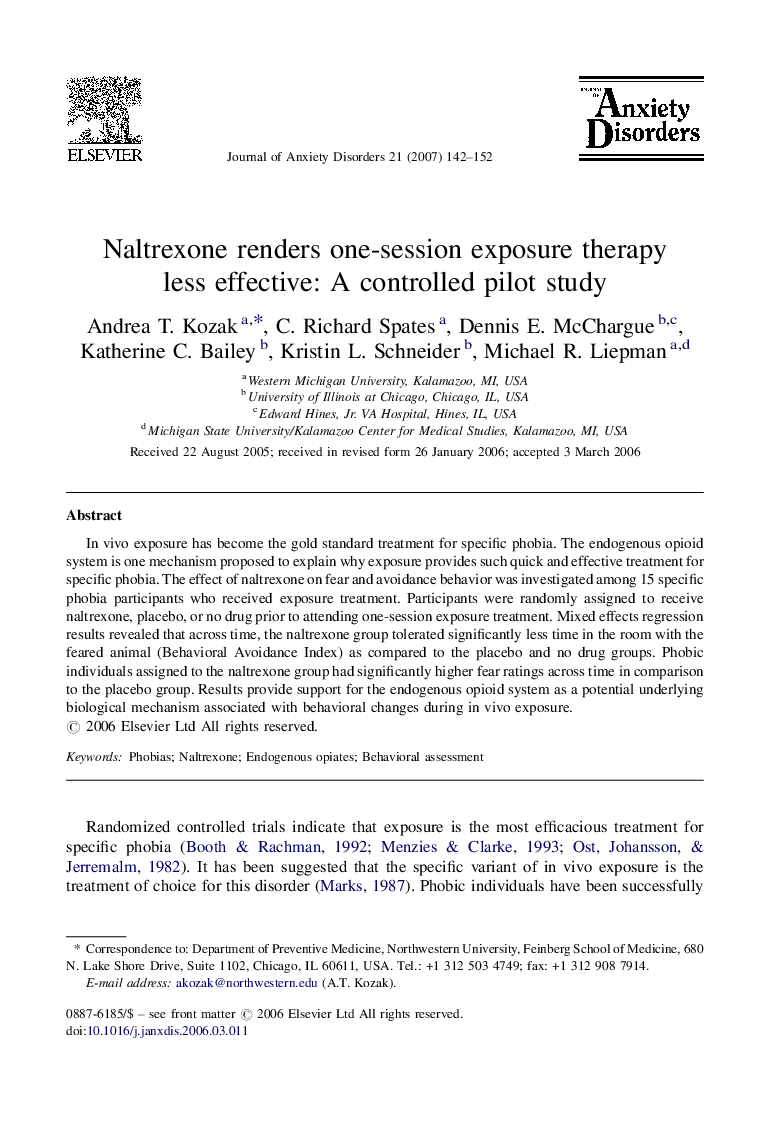| Article ID | Journal | Published Year | Pages | File Type |
|---|---|---|---|---|
| 910103 | Journal of Anxiety Disorders | 2007 | 11 Pages |
In vivo exposure has become the gold standard treatment for specific phobia. The endogenous opioid system is one mechanism proposed to explain why exposure provides such quick and effective treatment for specific phobia. The effect of naltrexone on fear and avoidance behavior was investigated among 15 specific phobia participants who received exposure treatment. Participants were randomly assigned to receive naltrexone, placebo, or no drug prior to attending one-session exposure treatment. Mixed effects regression results revealed that across time, the naltrexone group tolerated significantly less time in the room with the feared animal (Behavioral Avoidance Index) as compared to the placebo and no drug groups. Phobic individuals assigned to the naltrexone group had significantly higher fear ratings across time in comparison to the placebo group. Results provide support for the endogenous opioid system as a potential underlying biological mechanism associated with behavioral changes during in vivo exposure.
